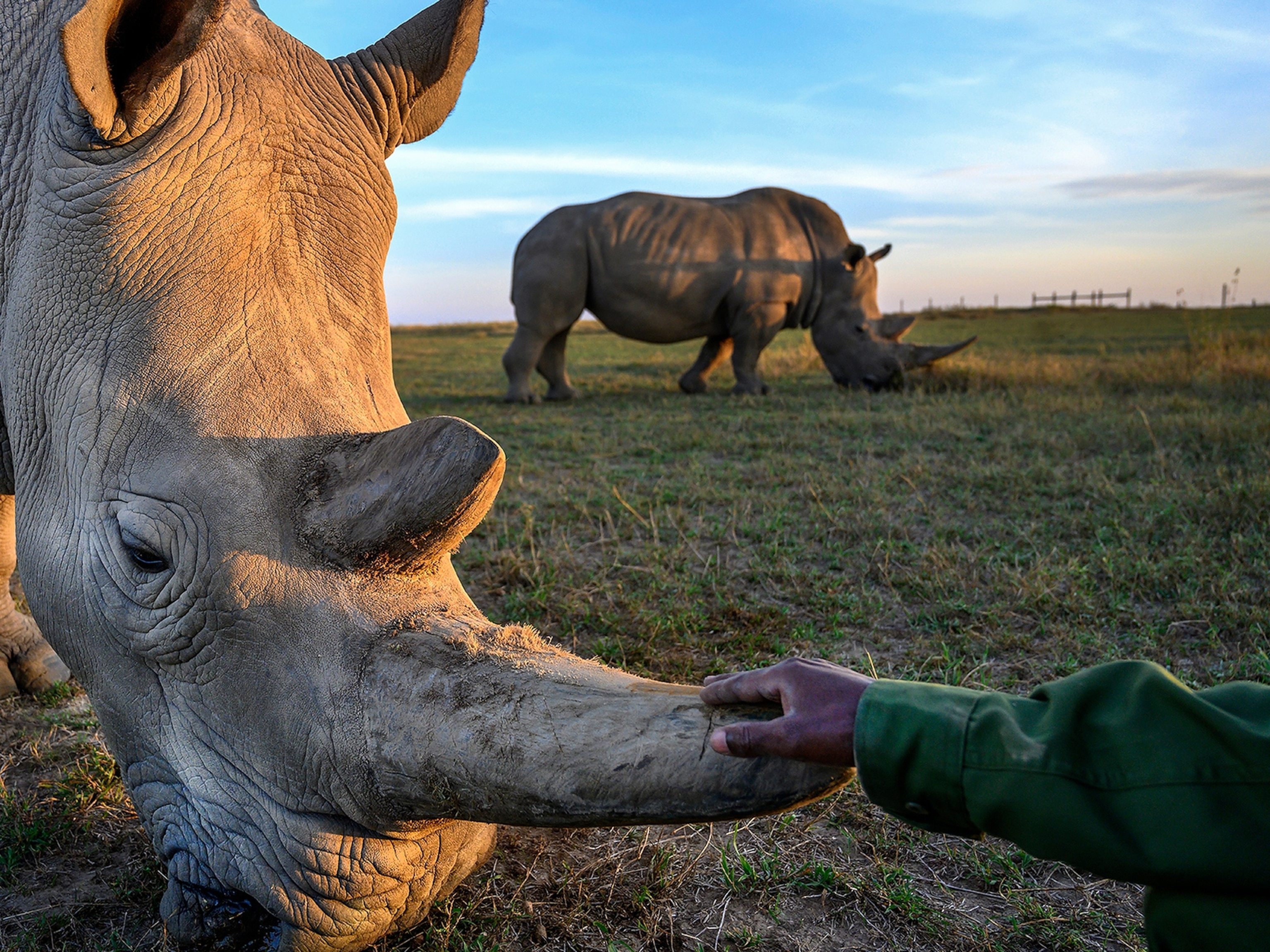Saving the world's largest sea star from extinction just got interesting
Scientists are racing to save sea stars from extinction through breeding. Here's what they're learning about the different species—from arm-wrestling bat stars to bloodless blood stars.
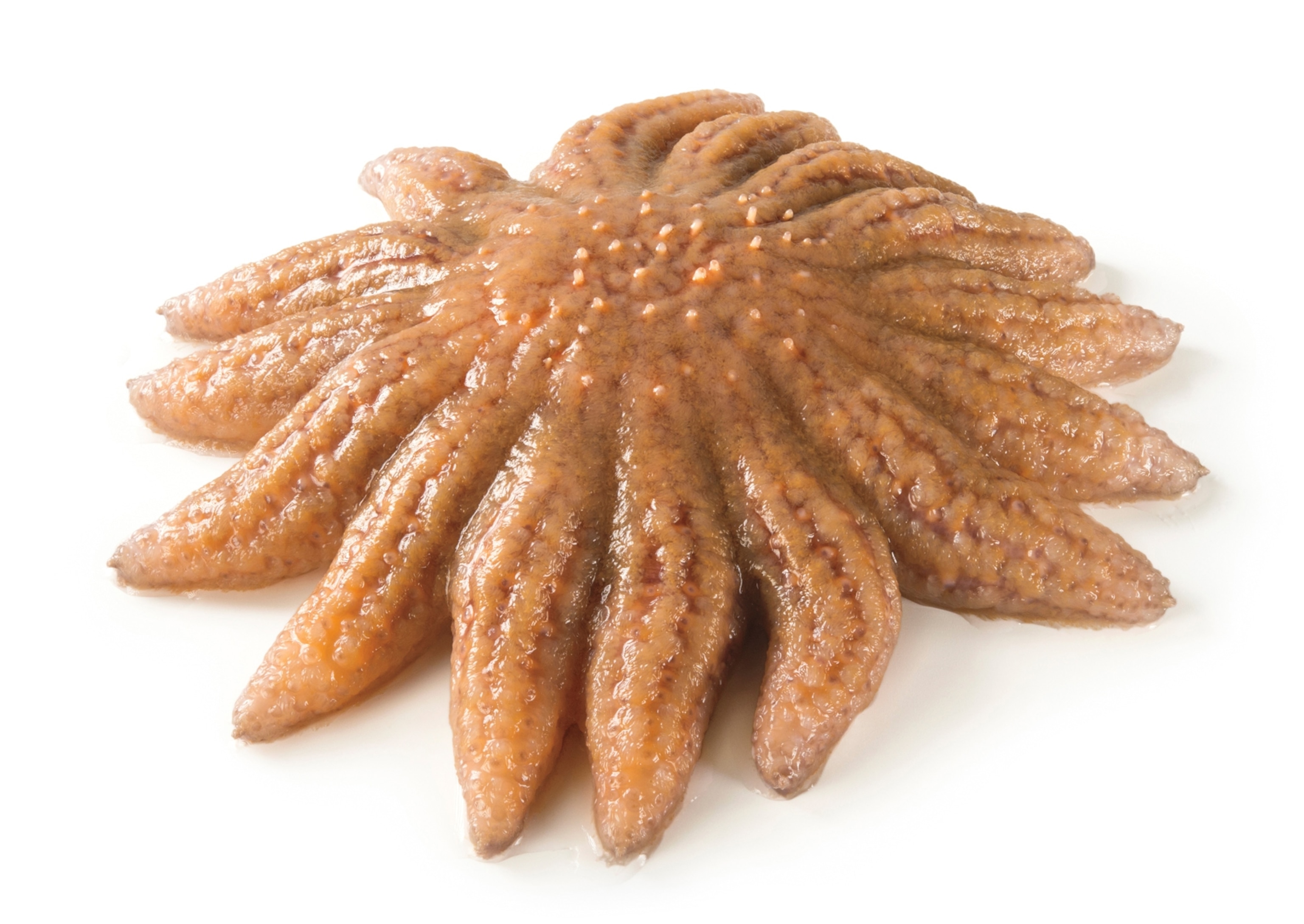
The sunflower sea star—which can span more than three feet across—is a ravenous, roving apex predator able to devour armored animals like urchins, snails, clams, and crabs. But a mysterious wasting disease, thought to be worsened by climate change, has led to an estimated global population decline of over 90 percent since 2013. In a bid to restore these hunters, which range across the northeastern Pacific, West Coast scientists are learning to breed them in captivity. “The entire aquarium heard us cheering,” says Melissa Torres, senior aquarist at UC San Diego’s Birch Aquarium at Scripps Institution of Oceanography, when her team produced its first fertilized eggs in 2024 following the lead of Washington State scientists. With more than 300 juveniles now growing across six partner institutions, the hope is to one day release the species back into California waters, where it’s considered essentially extinct. All this is excellent news, unless you happen to be a sea urchin.
These animals were photographed at the National Mississippi River Museum and Aquarium (Sunflower), the Indianapolis Zoo (Blood, Bat), the Minnesota Zoo (Rainbow), and the Aquarium of the Pacific (Leather). Their life spans are primarily based on observations of animals in human care.
Sunflower sea star (pycnopodia helianthoides)
Average size: 15-25 inches
Average life span: 20 to 65 years
Grappling power: Adults have up to 24 arms, juveniles just five. Limbs can regenerate if injured or bitten off.
Surprising speed: Some 15,000 tentacle-like tube feet propel the star at the (relatively fast) rate of 40 inches per minute.
Extra flexibility: Unlike most stars, this one has a skeleton that disconnects in places, making it easier to gobble up larger prey.
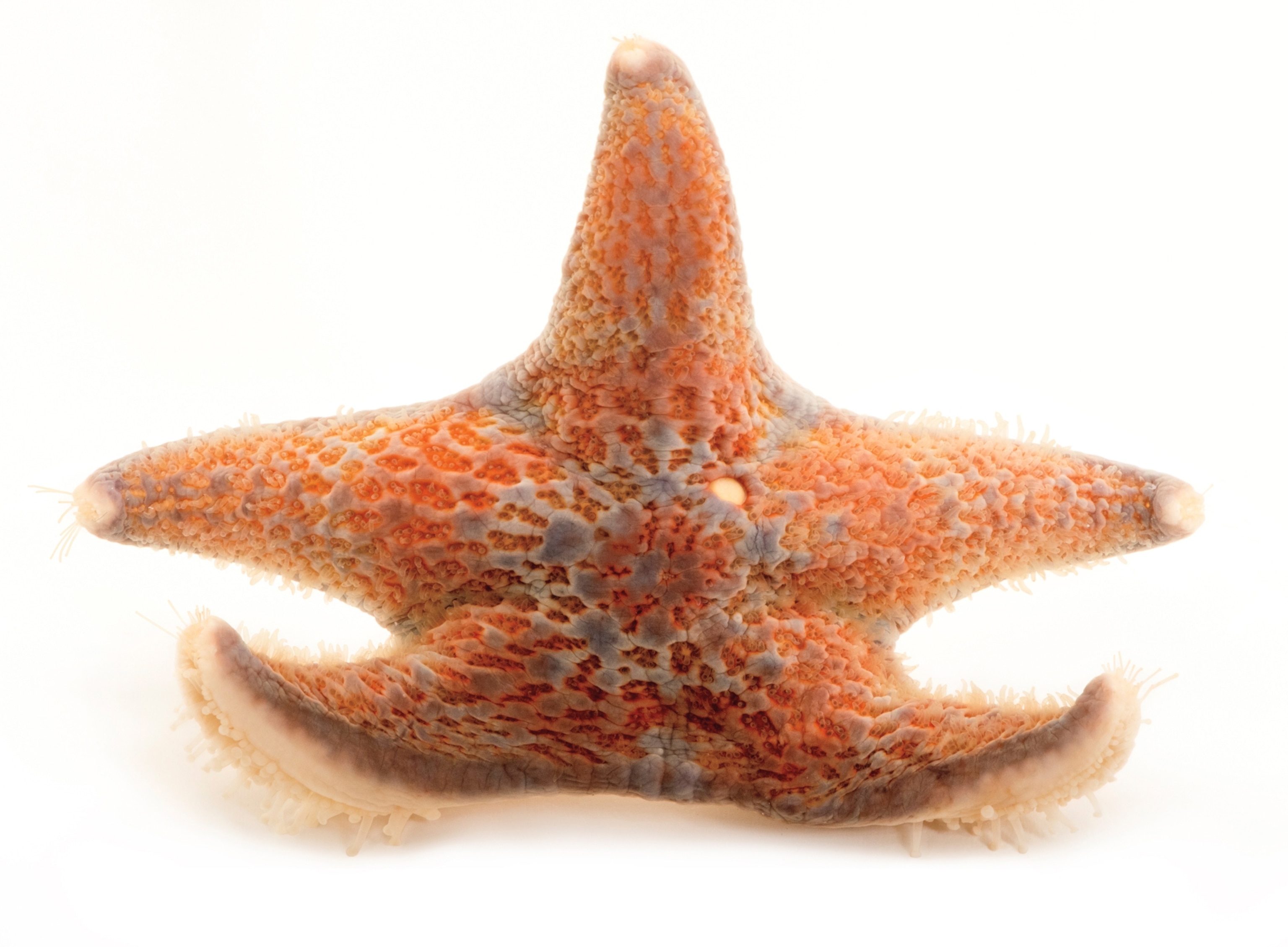
Leather star (dermasterias imbricata)
Average size: six inches
Average life span: Up to 35 years
Leather stars are named for the way their smooth and slimy skin feels like wet leather. But these creamsicle-colored echinoderms also sometimes called garlic stars, for the powerful scent they give off outside of the water.
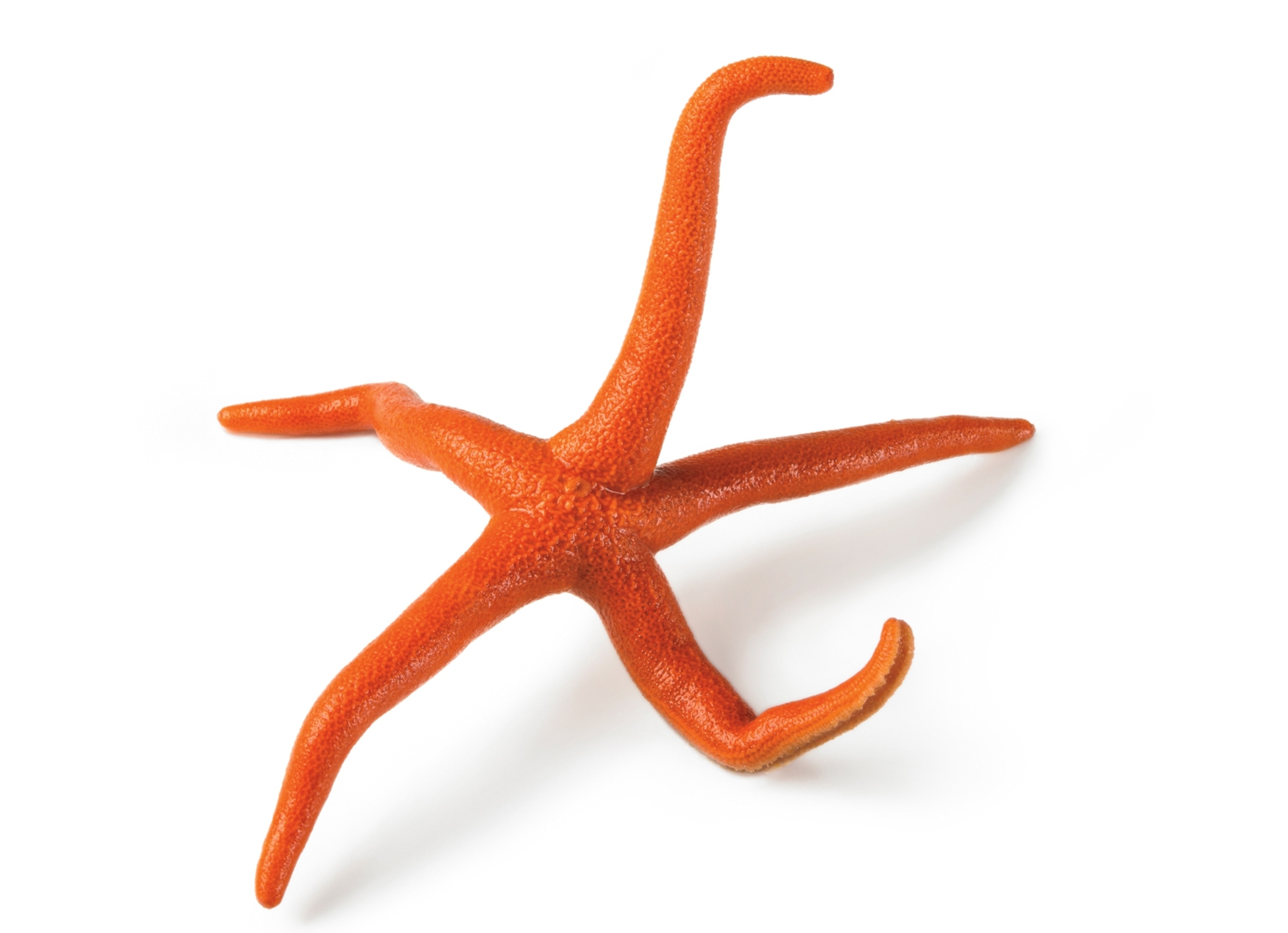
Pacific blood star (henricia leviuscula)
Average size: Under five inches
Average life span: Up to 35 years
Despite its name, the Pacific blood star doesn’t actually have any blood. No sea stars do! Rather, the echinoderms cycle nutrients through their bodies using seawater. Water also powers their movements, through hydrostatic pressure.
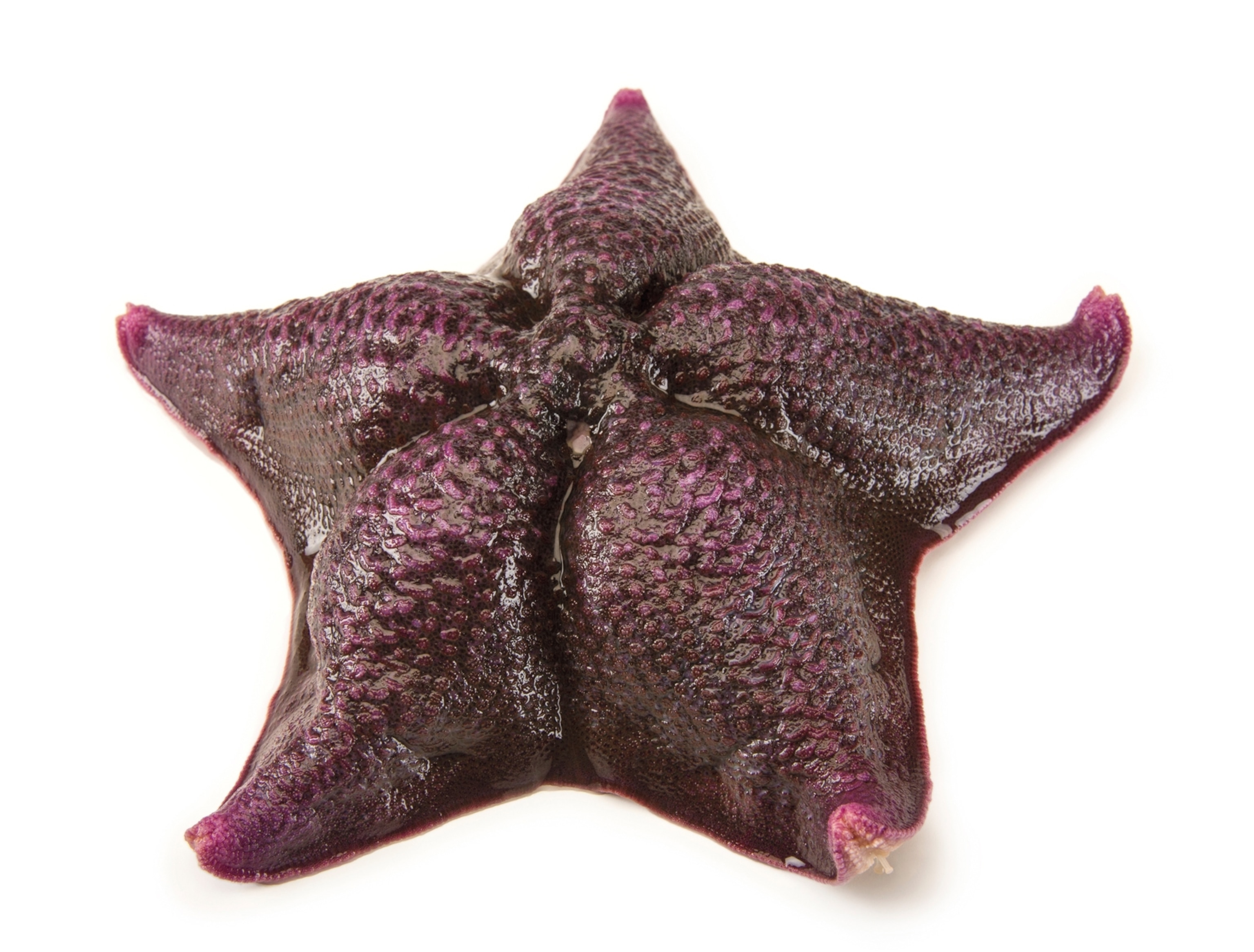
Bat star (patiria miniate)
Average size: Up to eight inches
Average life span: Up to 35 years
Bat stars are known for engaging in a sort of arm wrestling. When one bat star meets another, the two will compete to see who can get its arm on top of whom. Bat stars get their name from the webbing between their arms.
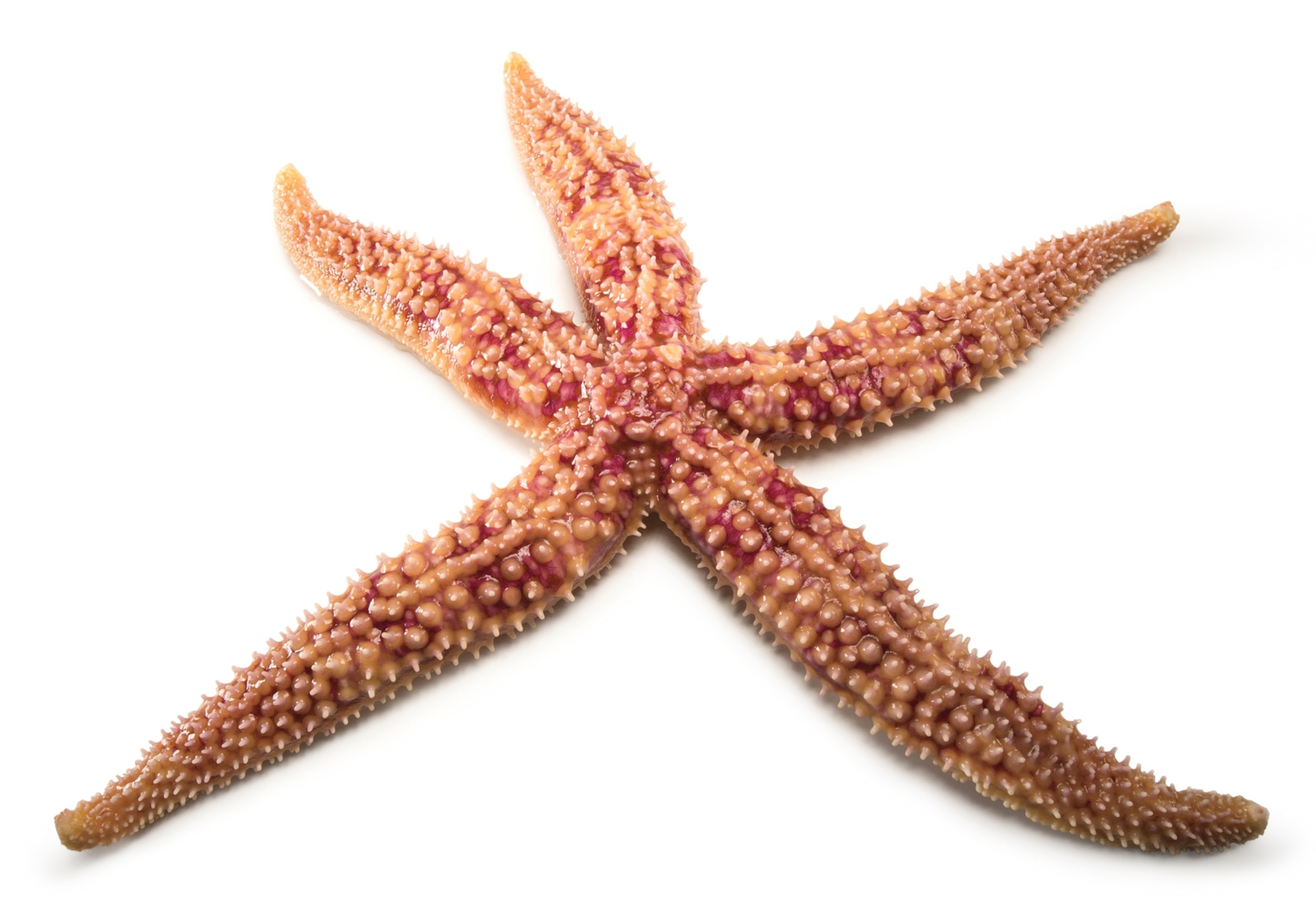
Rainbow sea star (orthasterias koehleri)
Average size: 24 inches
Average life span: Up to nine years
While many sea star species are generalists, digesting different kinds of prey and plant material they come across, the rainbow sea star has a favorite food—the thick-shelled clam known as Kennerley’s venus.
A version of this story appears in the January 2025 issue of National Geographic magazine.
The National Geographic Society funds Explorer Joel Sartore’s Photo Ark project, which aims to document every species living in the world’s zoos, aquariums, and wildlife sanctuaries.

